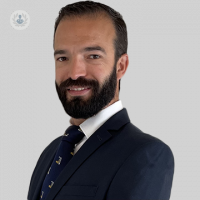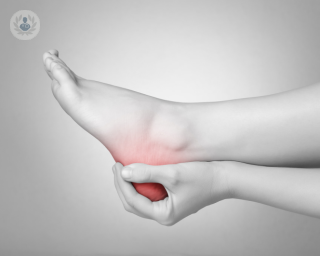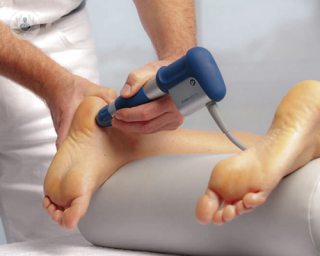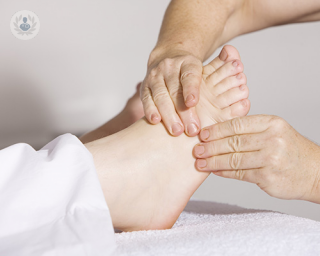Shockwave therapy
Mr Majeed Shakokani - Orthopaedic surgery
Created on: 02-03-2014
Updated on: 10-05-2023
Edited by: Conor Dunworth
What is shockwave therapy?
Shockwaves are high-powered sound waves that can be used to treat injured or painful tissues. Correctly applied, they have a therapeutic effect. Such treatments are primarily used for the treatment of conditions within orthopaedic and rehabilitative medicine.
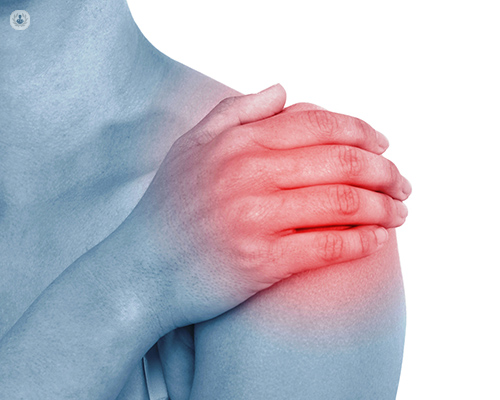
What does shockwave therapy treat?
Although shockwaves have multiple therapeutic benefits, this type of treatment is mainly used to treat diseases that require tissue rehabilitation.
Thus, the therapeutic properties of shockwaves are the improvement of blood circulation, the production of collagen, elimination of trigger points, and elimination of calcification and treatment of chronic inflammations.
Shockwave therapy is a common treatment option for chronic pain, such as shoulder or hip pain, plantar fasciitis, chronic tendinopathy or jumper's knee. In addition, shockwaves are widely used in cases of chronic joint pain, such as shoulder pain.
What does shockwave therapy consist of?
Shockwave therapy is a simple and minimally invasive treatment. The session will consist of three phases:
- First, the specialist will locate accurately the area to be treated with shockwaves.
- Next, a gel will be applied to the area to allow the shock waves to pass more efficiently.
- Finally, the shockwave applicator in the chosen area is applied. It is an appliance through which the specialist must manually press and apply the waves.
Normally, shockwave treatments require 3 to 5 sessions, which would be carried out a few days apart, depending on the tolerance and response of each patient. In general, the improvement in pain is noticed from the first session.
Preparation for shockwave therapy
Shockwaves do not require special preparation by the patient as it is not an invasive treatment nor is any type of anaesthesia required. It is carried out in an outpatient setting.
Aftercare
After the shockwave therapy sessions, patients are recommended to avoid practising physical exercise for the next 48 hours, especially that which affects or involves the treated area.
Some people may experience slight pain after the session, which subsides within a few hours. Shockwave therapy will often be complemented with physiotherapy sessions or exercises to do from home.
Alternatives to this treatment
In addition to shockwaves, there are other treatments indicated for the treatment of chronic pain, such as acupuncture, joint injections, platelet-rich plasma, among others.
